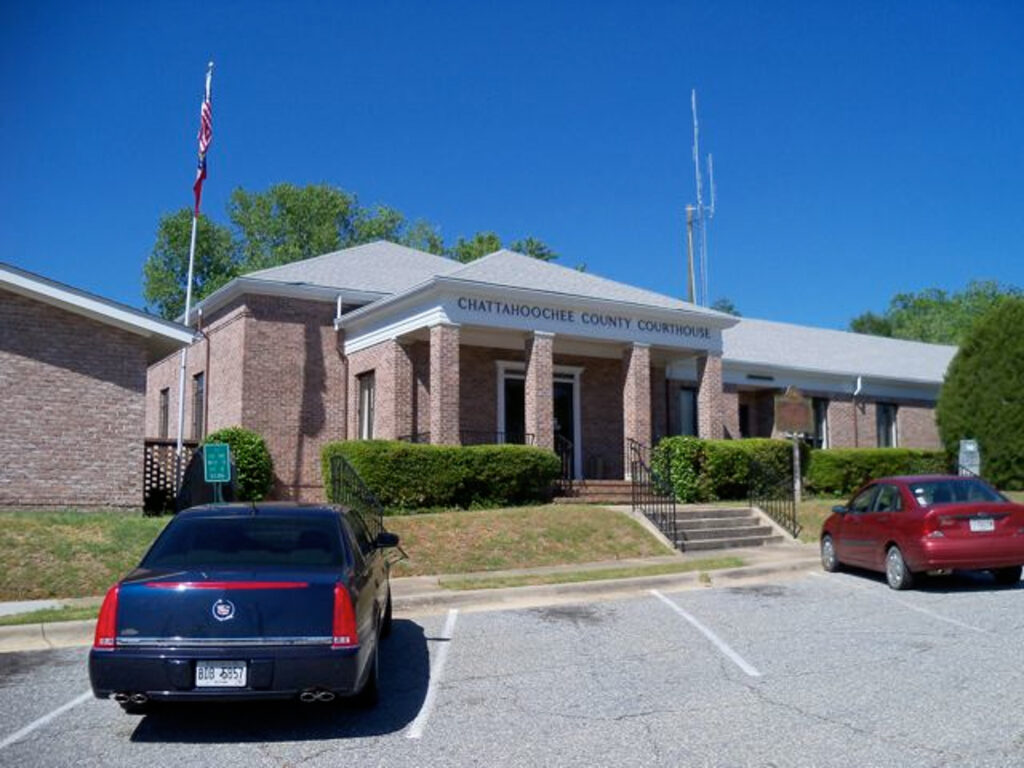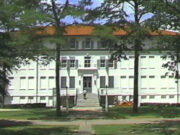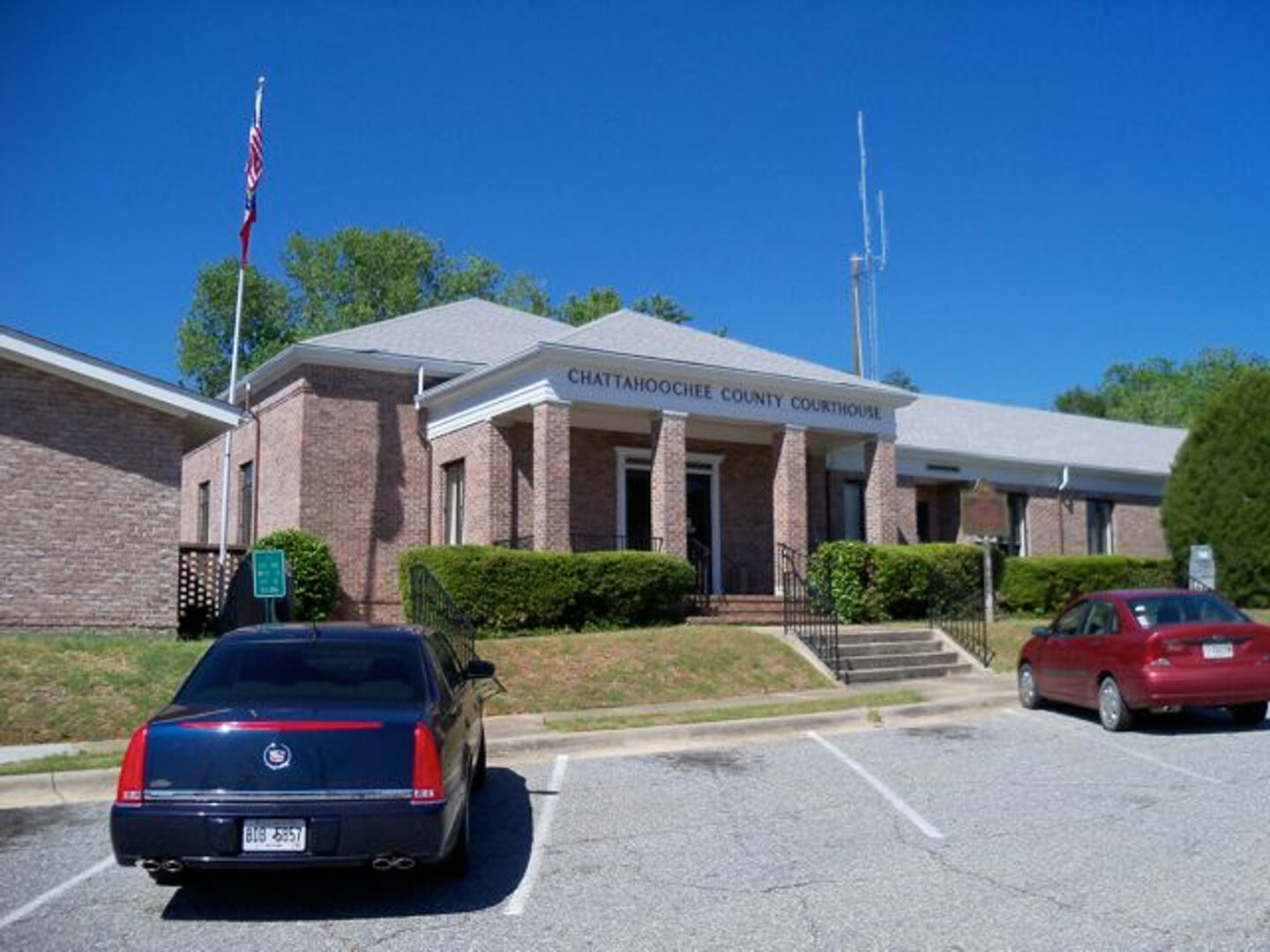Chattahoochee County, which borders Alabama just south of Columbus in west central Georgia, is named for the Chattahoochee River, which forms its western boundary. According to the 2020 U.S. census, the population is 9,565, a decrease from the 2010 population of 11,267.
By an act of the state legislature on February 13, 1854, Chattahoochee was formed from portions of Muscogee and Marion counties. It was the 109th of Georgia’s 159 counties. Although three small post offices dotted the newly created county at Bald Hill, Halloca, and Shell Creek, no suitable county seat existed. In April 1854 the inferior court ordered that the town of Cusseta be surveyed and organized by lots, to be sold to the highest bidder on May 11, 1854. This new town replaced an older village, Sand Town, which was previously located near the same site. The town was named in honor of a prominent tribe of the Creek Indians, the Cussetah.
A large two-story wooden courthouse was erected in 1854 and served as the center of county government until 1974, when plans were made to construct a one-story brick courthouse. The county agreed to relocate the old structure to Westville, a living-history site that was in neighboring Stewart County at the time. The Georgia Bar Association sponsored a renovation of the courthouse after its trip to Westville. Another historic landmark located in Cusseta is the Old Jail, which was constructed in 1902 and has been restored by the Chattahoochee County Historic Preservation Society.

In the nineteenth century agriculture was the livelihood of the majority of the county residents. By 1900 Chattahoochee County farms produced nearly 6,000 bales of cotton. Other agricultural products of note in 1900 included rice, peanuts, sweet potatoes, and peas. Fruit was a staple product as well; the county had nearly 25,000 apple, peach, and plum trees.
Since 1918 Fort Benning, renamed Fort Moore in 2023, has occupied the majority of Chattahoochee County. Named after Confederate general and Columbus resident Henry L. Benning, the fort at first occupied a small site on Macon Road in Columbus (Muscogee County), but federal officials soon acquired the 1,800-acre Riverside Plantation and 115,000 adjoining acres to create a training school for army infantry. The majority of the area known as the Main Post lies within Chattahoochee County and serves as the hub for activity of the military reserve. The base is a major contributor to both the county and regional economy. Visitors can tour the 75,000-square-foot National Infantry Museum and Soldier Center, which commemorates the life of the American infantryman from precolonial times to the present.








